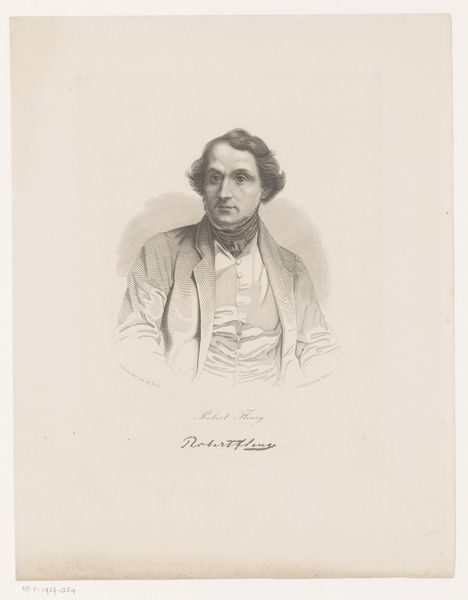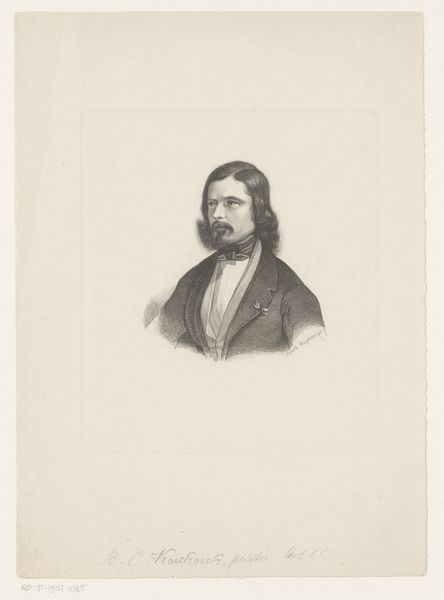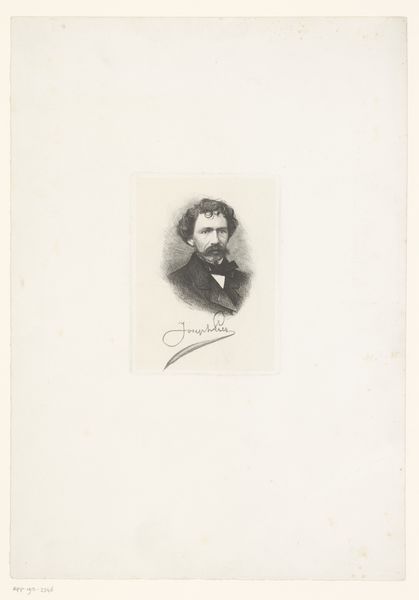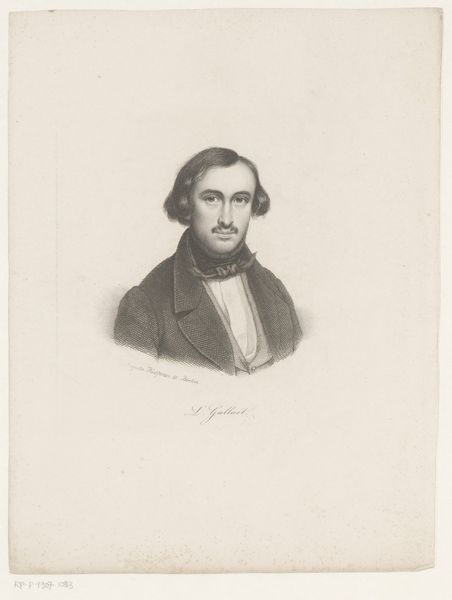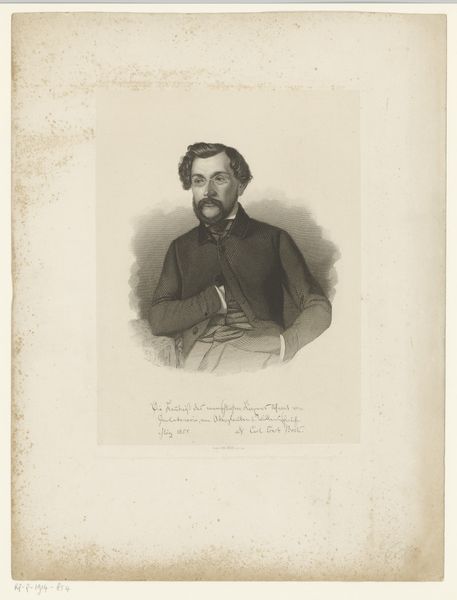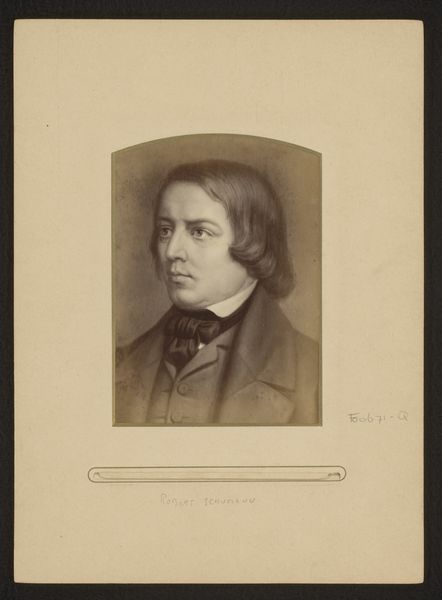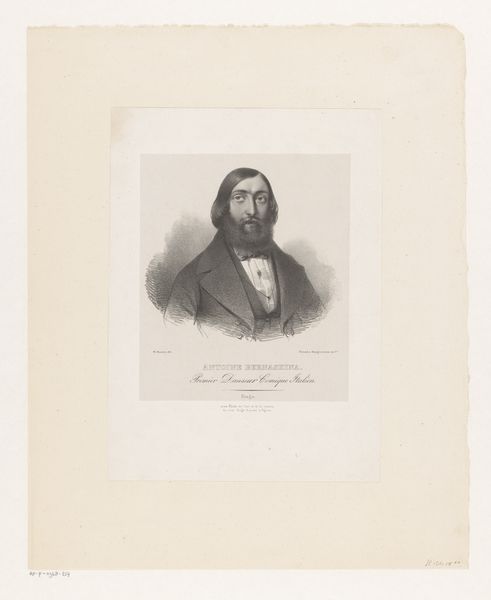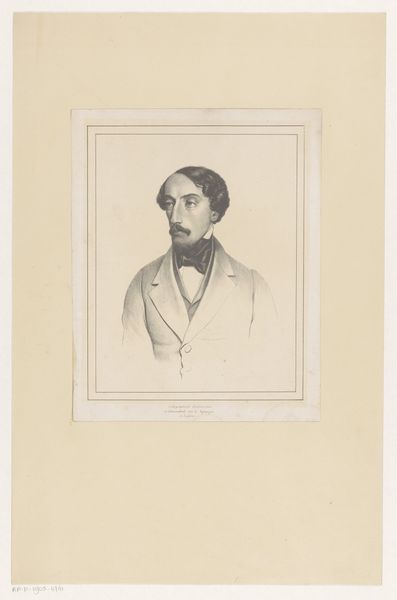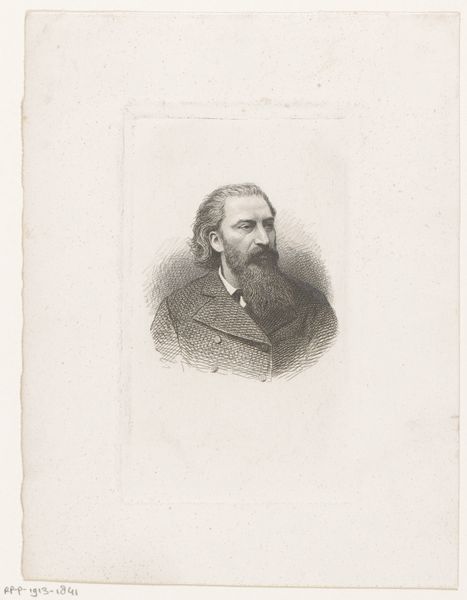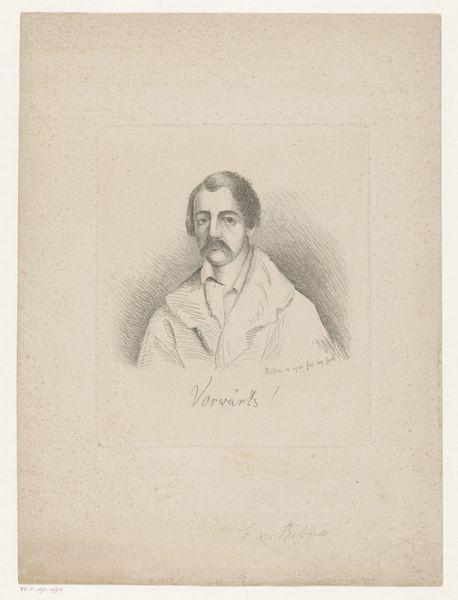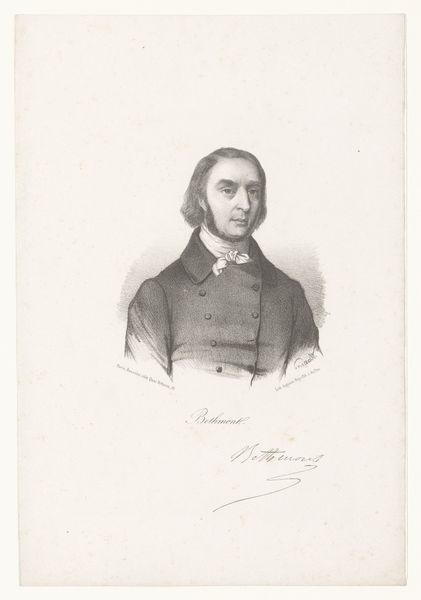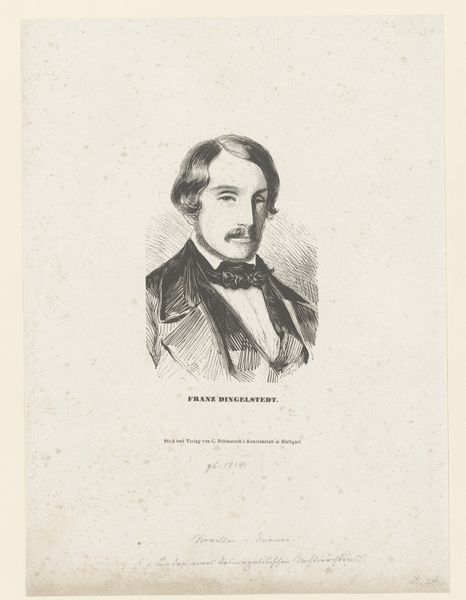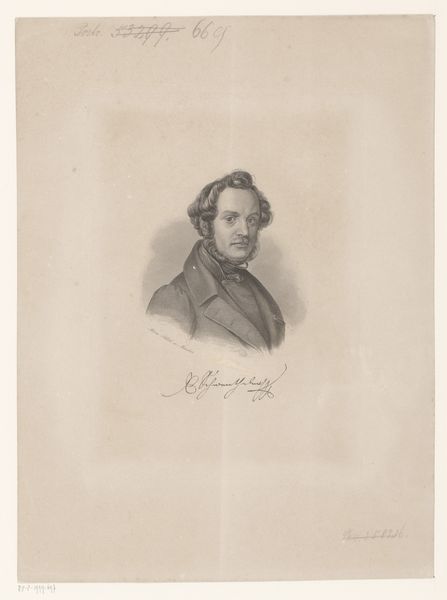
print, engraving
#
portrait
#
pencil drawn
# print
#
pencil sketch
#
old engraving style
#
engraving
#
realism
Dimensions: height 185 mm, width 127 mm
Copyright: Rijks Museum: Open Domain
Curator: Welcome. Before us, we have a print identified as a portrait of Max Waldau, dating roughly between 1850 and 1873. Editor: The sitter is a dignified, solemn man gazing into the middle distance. The tones are muted. He emanates seriousness, an almost melancholic gravity. Curator: Indeed. Its monochrome quality allows for a meticulous study of light and shadow, delineating the sitter's form with subtle gradations. Notice how the texture, achieved via engraving, enhances depth, providing a tactile dimension despite it being a two-dimensional image. Editor: That careful articulation of depth and shadow also calls up notions of intellectual contemplation – traditionally signaled by a person appearing lost in thought, as Max Waldau does here. And let's consider Waldau himself: a writer who wrestled with themes of societal change, cultural identity, and evolving moral codes. This representation is very deliberate. Curator: Precisely. It functions as an exercise in formal portraiture, one attempting a likeness but filtered through prevalent modes of artistic production like realism that valorize precision and objectivity. But look closer at how it handles the conventions of the era. The composition relies on asymmetry to convey both elegance and immediacy. The off-center placement is intentional. Editor: The signature just below him makes me consider not just him as an individual but the societal structures of authorship and authority. In effect, it proclaims Waldau’s status while anchoring it in a system that privileges specific male intellectuals. He is fixed within a cultural framework that lends him power. Curator: This touches upon the interplay of identity and representation so evident in Realist portraiture. Through nuanced observation and technical skill, we get more than just an individual. Editor: I am intrigued. Seeing "Portret van Max Waldau" in the Rijksmuseum alongside its cultural symbols really deepens my sense of this piece. Curator: Absolutely, considering it merely for its formal features risks missing all these layers and links to systems of power that were intentionally communicated in works like these.
Comments
No comments
Be the first to comment and join the conversation on the ultimate creative platform.
